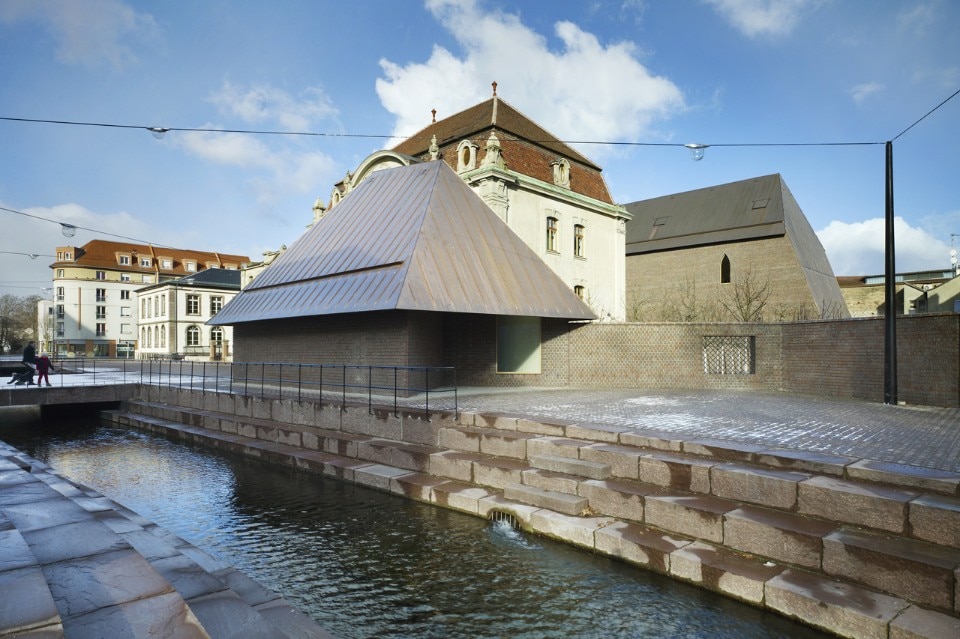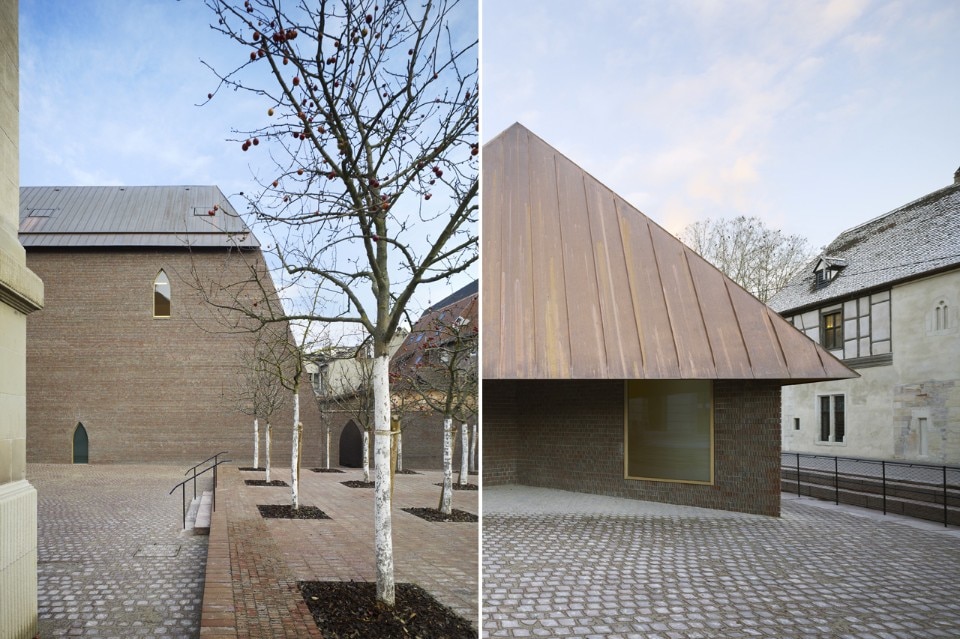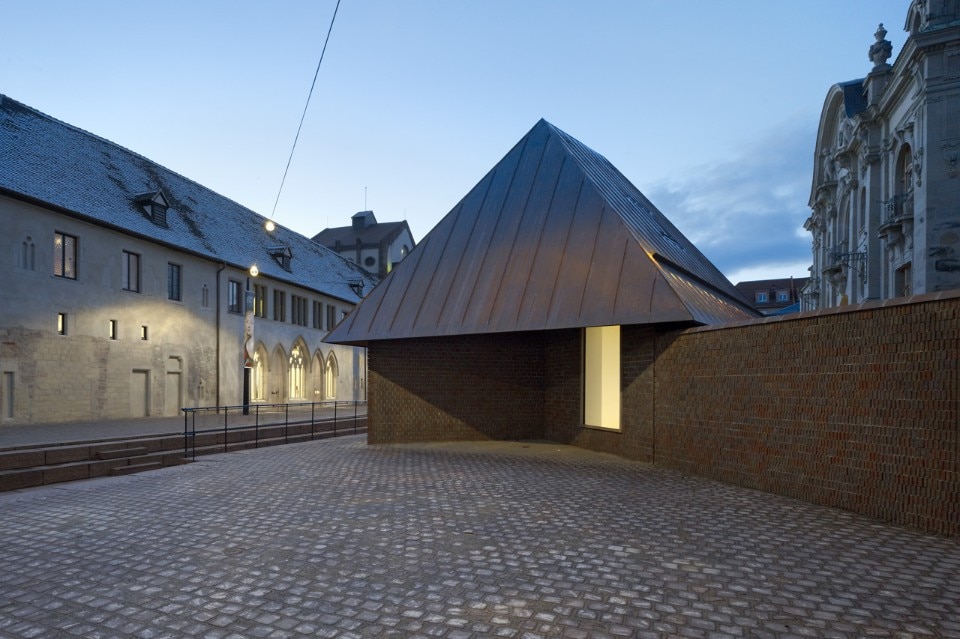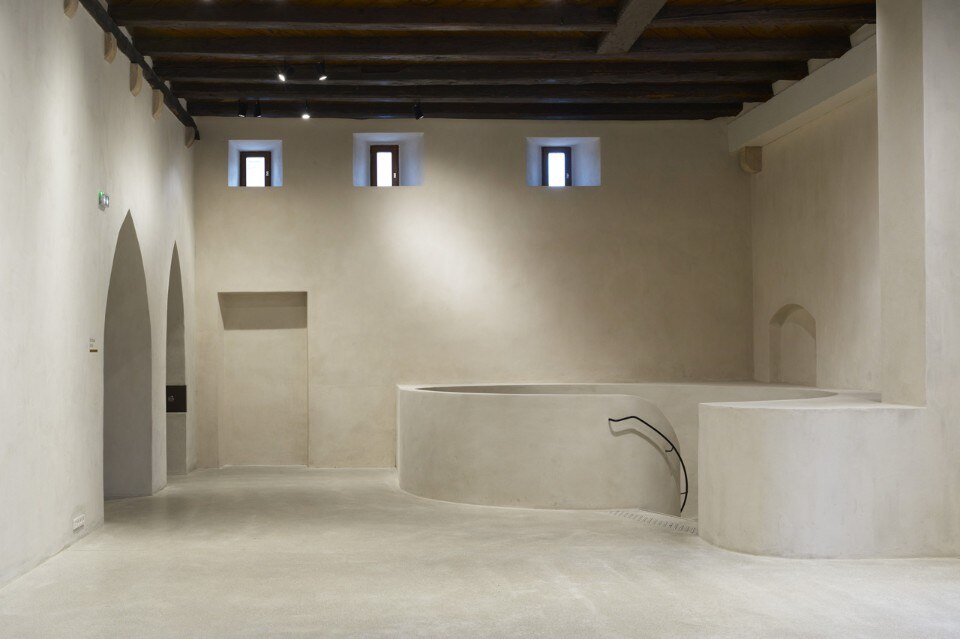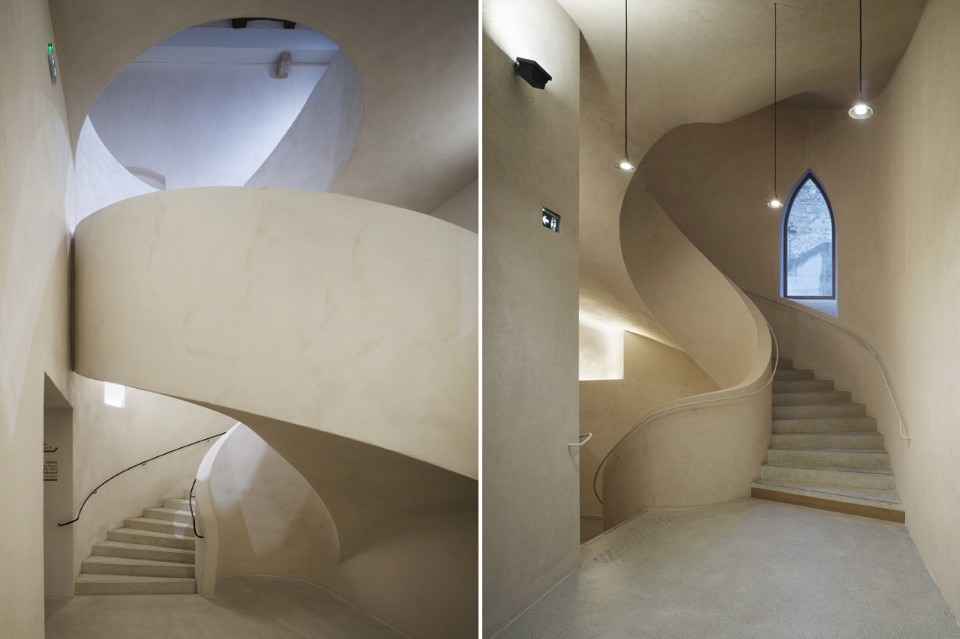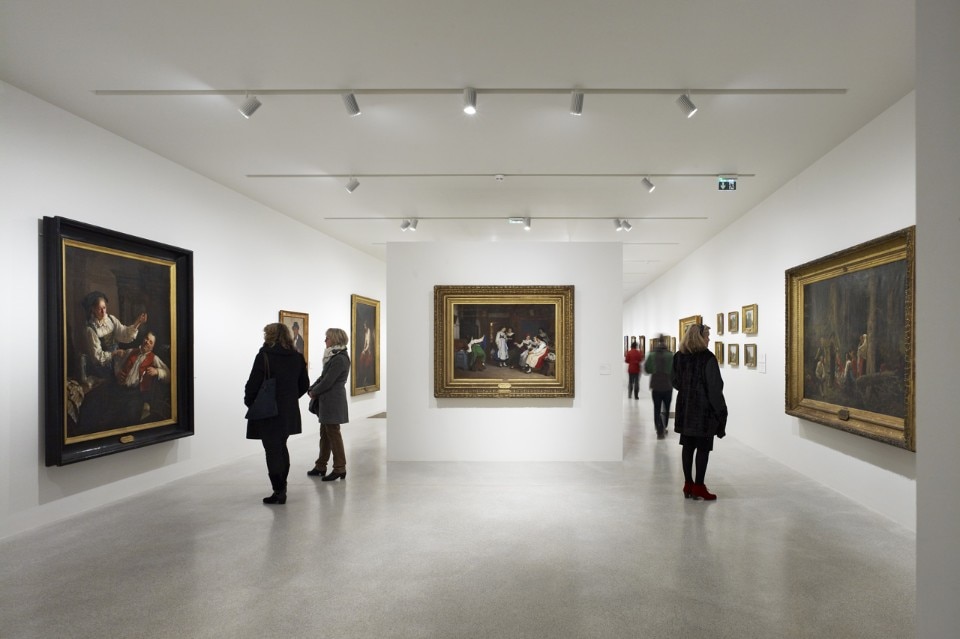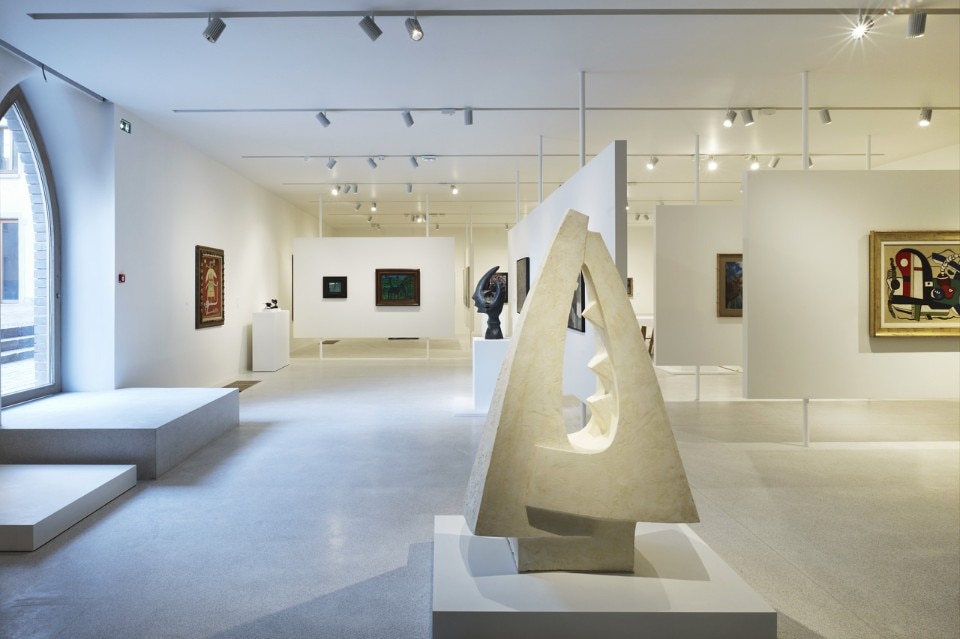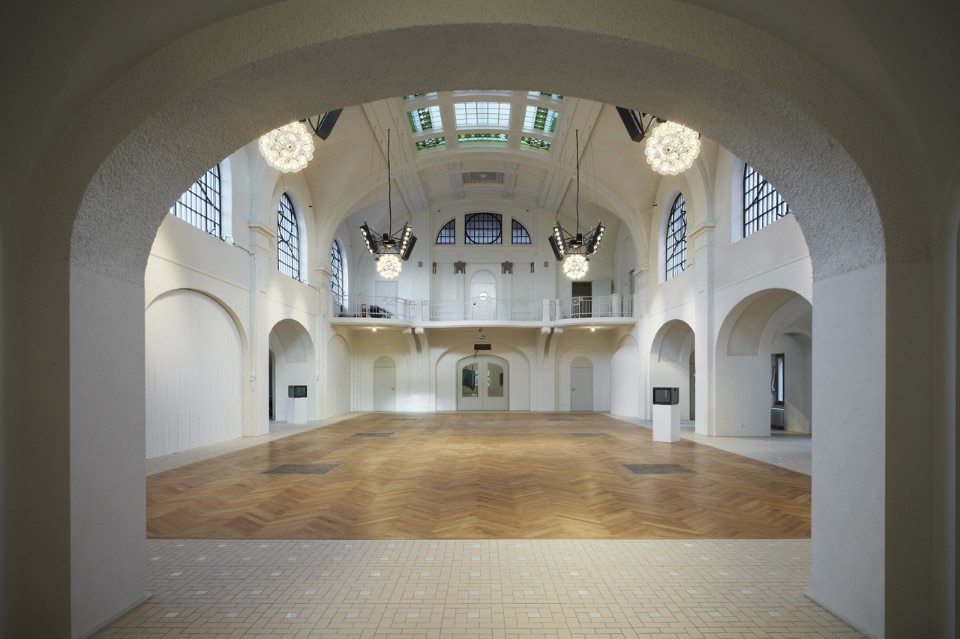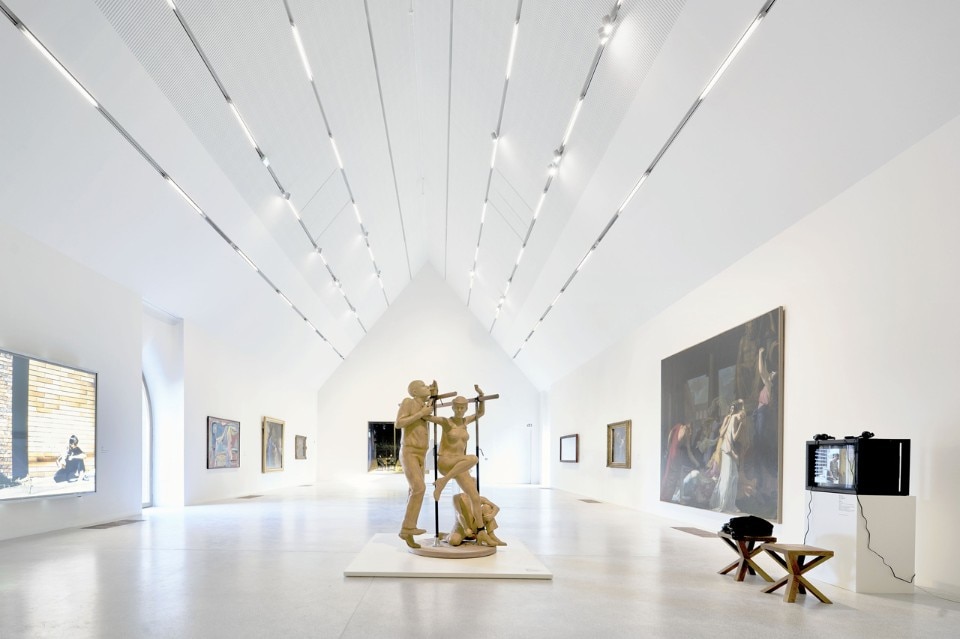After the extension, two building complexes, physically connected by an underground gallery, face each other across Unterlinden Square. The medieval convent consisting of a church, a cloister, a fountain and a garden stand to one side. On the other side of the square, the new museum building mirrors the church’s volume and, together with the former municipal baths constitutes a second, enclosed court.
Between the two museum complexes, Unterlinden Square has recovered its historical significance, recalling the times when, across from the convent, stables and farm buildings formed an ensemble known as the “Ackerhof”. The bus stop and parking lot existing prior to the museum's renovation have now become a new public and urban space. The Sinn canal, which flows under Colmar’s old town, has been reopened, becoming the central element of this new public space. Close to the water, a small house marks the museum's presence on the square: its positioning, volume and shape are those of the mill that once stood there. Two windows allow passers-by to look downwards at the underground gallery connecting the two ensembles of buildings.
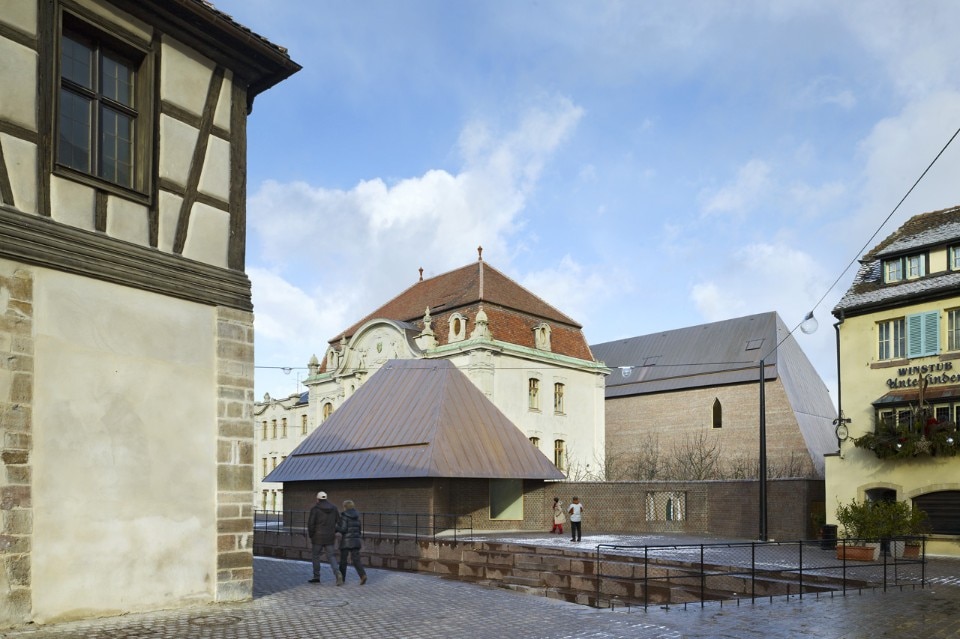
The architects were looking for an urban configuration and architectural language that would fit into the old town and yet, upon closer inspection, appear contemporary.
Moved to the centre of Unterlinden Square, facing the canal, the entrance to the expanded Museum leads to the convent, whose facade has been delicately renovated. The renovation works were carried out in close collaboration with the architects of the French national heritage department.
Museological components from the recent past were removed and the spaces restored to an earlier state. Original wood ceilings and reopened formerly blocked windows looking out on the cloister and the city are now revealed. The church’s roof has been renovated, and a new wood floor installed in the nave. Visitors walk down a new, cast concrete spiral staircase leading to the underground gallery that connects the convent with the new building. Inside, Herzog & de Meuron designed the underground gallery and the new exhibition building (now called the “Ackerhof”), which present the 19th- and 20th-century collections, along contemporary, abstract lines. The space on the second floor of the Ackerhof is dedicated to temporary exhibitions: its gabled roof and exceptional height (11.5 meters) reflect the proportions/volumes of the Dominican church standing opposite. The central space of the former municipal baths, the swimming pool (“La Piscine”), is now connected to the new exhibition spaces. It serves as a venue for concerts, conferences, celebrations and contemporary art installations. The other spaces of the former baths house the administration of the museum, a library, a café facing the new courtyard and the Colmar Tourist Office facing Unterlinden Square.
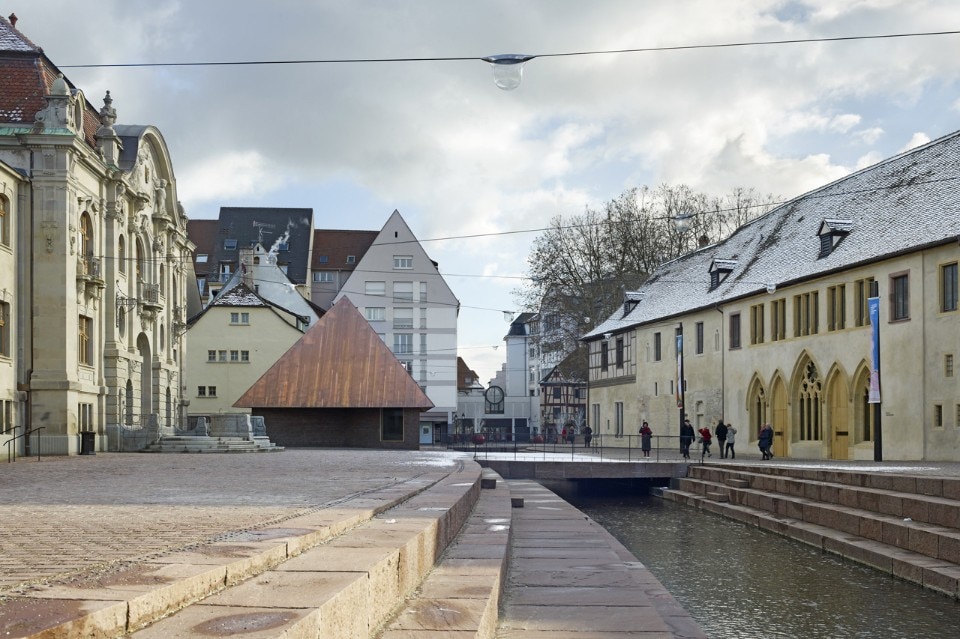
Musée Unterlinden, Extension, Colmar, France
Program: museum
Architects: Herzog & de Meuron
Project team: Jacques Herzog, Pierre de Meuron, Christine Binswanger (Partner in Charge), Christoph Röttinger (Associate, Project Director), Christophe Leblond (Project Manager), Marco Zürn (Project Manager) Edyta Augustynowicz (Digital Technologies), Farhad Ahmad (Digital Technologies), Aurélien Caetano, Delphine Camus, Tim Culbert, Arnaud Delugeard, Carlos Higinio Esteban, Judith Funke, Daniel Graignic Ramiro, Yann Gramegna, Wolfgang Hardt (Partner), Thorsten Kemper, Aron Lorincz (Digital Technologies), Donald Mak (Associate), Severin Odermatt, Valentin Ott, Alejo Paillard, Nathalie Rinne, Jordan Soriot, Raul Torres Martin (Digital Technologies), Guy Turin, Paul Vantieghem, Maria Vega Lopez, Caesar Zumthor
Museography: Jean-François Chevrier, art historian, assisted by Élia Pijollet
Partner Architect: DeA Architectes
Structural Engineering: ARTELIA
Acoustics: Echologos
Cost Consultant: C2Bi
Facade Engineering: PPEngineering, Prof. Jäger
Lighting Consultant: Arup
Signage: NEWID
Landscape Consultant: Cap Vert Ingénierie
Tree Consultant: August Kunzel Landschaftsarchitekten
Area: 7,700 sqm (5,800 sqm existing +1,900 sqm new)
Completion: 2015


